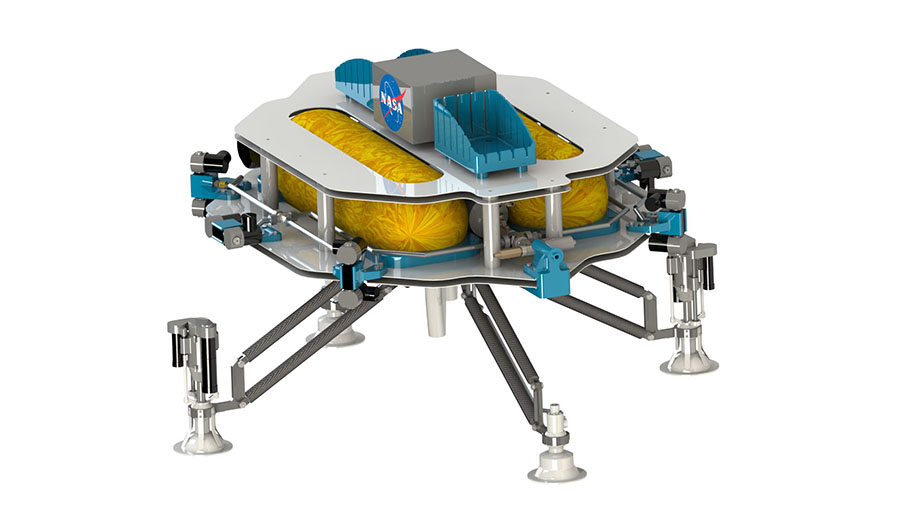Florida – NASA is currently working on a quadcopter that will fly inside Mars’ atmosphere in order to explore areas which land rovers can’t reach.
As Mars’ atmosphere is very thin, the drone called Extreme Access Flyer (EAF), will work with cold gas jets that discharge oxygen or water vapor instead of rotors like common drones.
“The first step in being able to use resources on Mars or an asteroid is to find out where the resources are. They are most likely in hard-to-access areas where there is permanent shadow. Some of the crater walls are angled 30 degrees or more, and that’s far too steep for a traditional rover to navigate and climb.” Rob Mueller, a senior technology at the Kennedy Space Center, said.

The EAF, which is 5 feet wide, will be programmed to recognize specific landmarks and search for areas rich in resources, instead of using GPS. It will also count on a digger that is able to lift 7 grams of material. That is enough for NASA to study samples of the different minerals and their locations.
The importance of the resources that may be found on Mars is that they are fundamental keys for future exploration and even colonization of the planet.
The major objective of the EAF missions is to find resources that can sustain the astronauts’ lives and provide them with fuel for the spacecrafts. NASA has clear intentions to make EAF search for lava tunnels so they can serve as provisional habitats for humans.
“You could put a whole habitat inside a lava tube to shelter astronauts from radiation, thermal extremes, weather, and micrometeorites,” Mueller said.
For many years, NASA has been planning to deeply explore Mars and understand if it can actually be habitable for human beings. For this, the development of NASA’s exploratory drones is a major step toward that accomplishment.
However, the aspiration to colonize Mars, has also increased because of SpaceX and its founder, Elon Musk. He declared that if things continue evolving this way, by 2025 he would sell $500,000 one-way tickets to Mars.
Source: NASA
